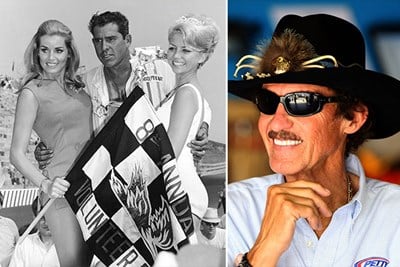It might sound like something out of Ripley’s Believe It or Not, but there's actually sound reasoning. NASCAR racing started with Appalachian moonshiners—and Wilkes County, North Carolina, is returning to its roots as authorities try to determine what’s really going on beneath the historic North Wilkesboro Speedway.
NASCAR and Moonshine
During the Prohibition era in the United States (1920-1933), the production, sale, and transportation of alcoholic beverages were prohibited by law. However, demand for alcohol persisted, leading to the rise of illegal distilleries producing moonshine, which was homemade, untaxed whiskey. Moonshine runners, often referred to as "bootleggers," would transport the illegal liquor from the secluded rural areas where it was produced to urban areas for distribution. These runs required fast, agile vehicles to evade law enforcement, so they modified cars for greater speed and handling.
With the end of Prohibition, many of these bootleggers continued to modify their cars for racing, as they had developed a knack for driving fast and evading capture. Races between these modified cars, known as "stock cars," became popular entertainment in the rural southern United States. In 1947, NASCAR was founded by Bill France Sr and other drivers and promoters. The organization aimed to standardize rules and promote organized racing events, transforming a regional sport into a national phenomenon. The North Wilkesboro Speedway opened that same year and was one of NASCAR’s original tracks.
Even as NASCAR became more organized and professional, the influence of moonshine culture remained. Many early NASCAR drivers had backgrounds in moonshine running, and the sport retained elements of its bootlegging roots, including the culture of speed and the aura of outlaw defiance.
What’s going on in Wilkesboro?
While the track was undergoing routine maintenance, employees at the track noticed cracks in the concrete in Section N, which is one of the oldest parts of the grandstands. Around 600 seats had to be removed across Sections O and N to evaluate the cracks. While removing the seats, they uncovered an open area of approximately 700 square feet underneath the aging concrete. The sinkhole was filled in, but it was a different recess under the grandstands that caught the attention of Wilkesboro natives.
Steve Swift, senior vice president of operations and development at Speedway Motorsports, remarked on the discovery, noting that while they haven't found a moonshine still yet, they've found a small cave and an interior wall that could have been used for illegal liquor production and hiding from the law. Rumors have long abounded in Wilkesboro that moonshine was being produced at the track, which opened in 1947, shut down in ‘96, and reopened in mid-2023 after restoration. Locals want to know more about the possible moonshine cave, but Swift and his colleagues are most concerned about getting the track functional for upcoming races. Approximately 600 seats have been removed from the affected sections, and plans are underway for foundation repair and concrete replacement ahead of the NASCAR All-Star Race Week scheduled for May 14-19.



